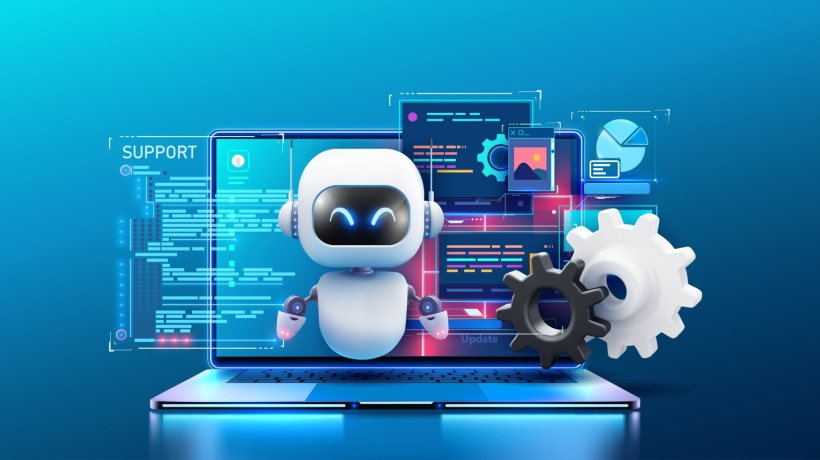The Future Of Education Software With Artificial Intelligence
With the arrival of technology, especially Artificial Intelligence (AI), the field of education has seen a notable revolution. For pupils, AI-powered tools and software have made learning more interesting, interactive, and tailored. This article will discuss Artificial Intelligence in education software development and investigate its possibilities for transforming digital learning.
Defining Artificial Intelligence In Education
Artificial Intelligence is the capacity of a computer to complete activities usually requiring human intelligence: visual perception, speech recognition, decision making, problem solving, etc. In the context of education, Artificial Intelligence refers to the application of Natural Language Processing methods and Machine Learning algorithms to create software tools able to comprehend and answer student questions.
How Artificial Intelligence Informs The Development Of Education Software
In what ways does AI inform the development of educational software? For the creation of education software, Artificial Intelligence has numerous uses:
- Personalized learning
AI-powered adaptive learning systems tailor educational content to individual students' needs, abilities, and learning styles. - Intelligent tutoring systems
These systems provide one-on-one instruction to students, offering real-time feedback and guidance on complex concepts. - Natural Language Processing (NLP)
AI-driven NLP tools enable students to interact with virtual assistants, chatbots, or online platforms using natural language, making learning more intuitive. - Predictive analytics
These tools analyze vast amounts of data from various sources to predict student performance and provide insights for teachers and policymakers.
Advantages Of AI And The Evolution Of Educational Software
Including Artificial Intelligence into the development of educational software offers many advantages:
- Personalized learning experiences along with real-time feedback and direction help raise academic performance.
- Interactive technologies, chatbots, and virtual assistants help students to find learning fun and interesting.
- AI-powered tools enable teachers to concentrate on higher-order activities such as lesson planning, grading, and student counseling, thereby improving their efficiency.
- Digital platforms and online materials help to lower the demand for physical infrastructure and, hence, the expenses related to conventional teaching strategies.
AI Case Studies In Education
AI-powered education software has been effectively used by a number of businesses and universities:
- Using Machine Learning techniques, Coursera's adaptive learning platform customizes course material to fit particular student requirements.
- With explanations and practice activities for several disciplines, Khan Academy's chatbot, called "Aria," helps students navigate the website.
- IBM's Watson Education provides AI-powered products for educators like grading help and lesson planning aid.
Challenges And Considerations Of AI In Education
Although Artificial Intelligence has a great ability to revolutionize education, some issues must be resolved:
- Data quality and availability
The success of AI algorithms depends on the quality and quantity of data available. - Bias and equity
AI systems can perpetuate existing biases and inequalities if not designed with fairness and equity in mind. - Teacher training and support
Educators require training and support to effectively integrate AI-powered tools into their teaching practices.
6 Types Of Education Software
Educational software can be classified into a variety of categories according to its functionality and purpose. The following are a few examples:
1. Educational Games
Games have consistently been a favorite among students and have been employed to increase student engagement. Educational games have been transformed by technological innovations, rendering them more interactive and immersive. They encompass a variety of disciplines, including mathematics, science, language arts, and history. They convert the learning process into a pleasant experience, which helps students retain the information more effectively.
2. Reference Software
This category of software encompasses digital resources such as encyclopedias, dictionaries, and other informative tools, providing students with immediate access to data. These instruments are indispensable for the purpose of conducting research and enabling the immediate dissemination of accurate and current information.
3. Simulation Software
Simulation software enables students to fully engage in real-world scenarios in a virtual environment. This type of software is frequently employed in the fields of engineering, medicine, and aviation to provide practical learning experiences that are free of any real hazards or repercussions.
4. Multimedia Software
This category encompasses tools such as presentations, animations, and videos that enhance the interactive and engaging nature of education. It is adaptable to a variety of learning approaches and can be implemented in a variety of disciplines to visually represent intricate concepts.
5. Assessment Software
This software is designed to evaluate the knowledge, skills, and comprehension of students. It includes quizzes, exams, and other tools that offer real-time feedback to assist students in monitoring their progress and identifying areas that require improvement.
6. Mobile Device Management (MDM) Software
MDM software is essential for the management and security of mobile devices in educational institutions. It enables administrators to remotely configure settings, deploy applications, and enforce security policies across a fleet of devices, thereby guaranteeing consistent and secure usage.
Conclusion
By giving students individualized, dynamic, and interesting experiences, Artificial Intelligence could transform digital learning. Its inclusion into education software development, however, calls for rigorous evaluation of issues and constraints like data quality, bias, and teacher preparation. By tackling these issues, educators, legislators, and business leaders can use Artificial Intelligence to produce a more inclusive, efficient, and successful learning environment.









